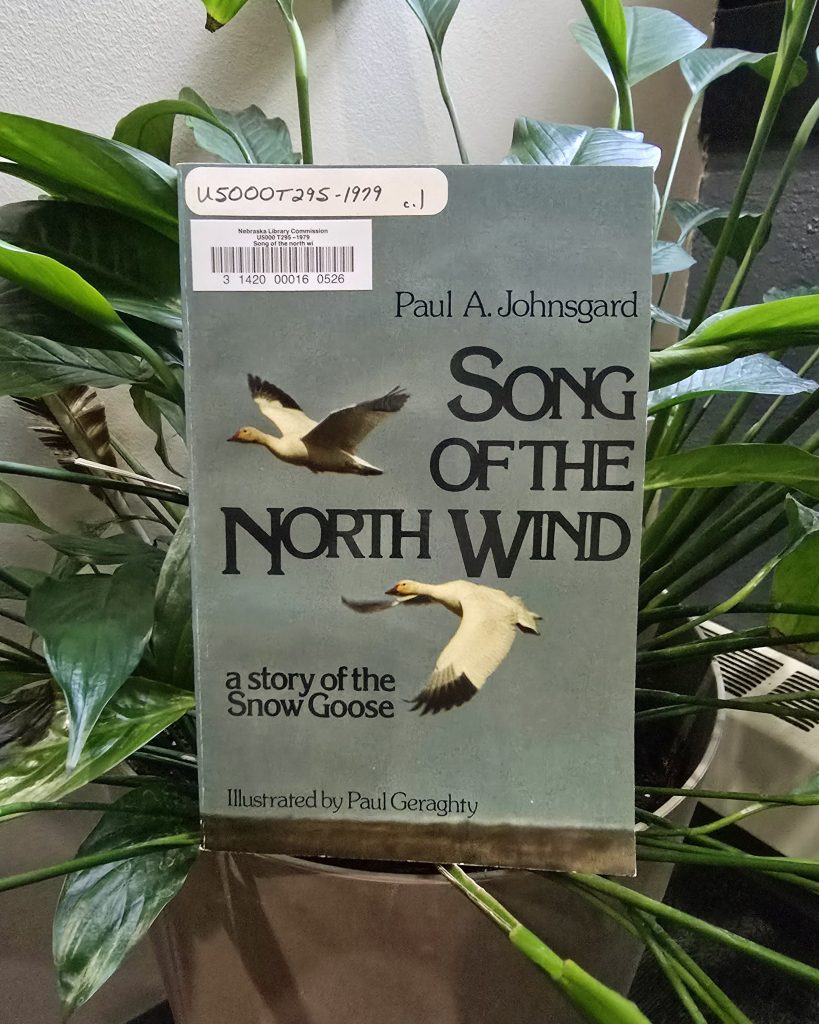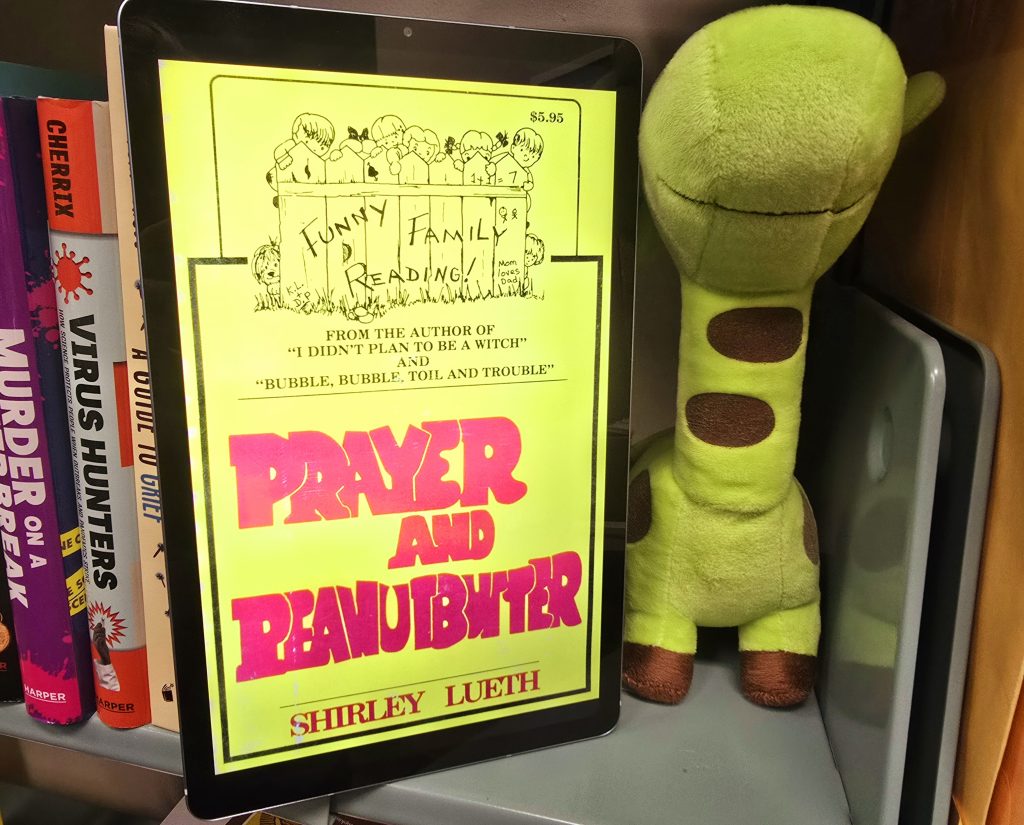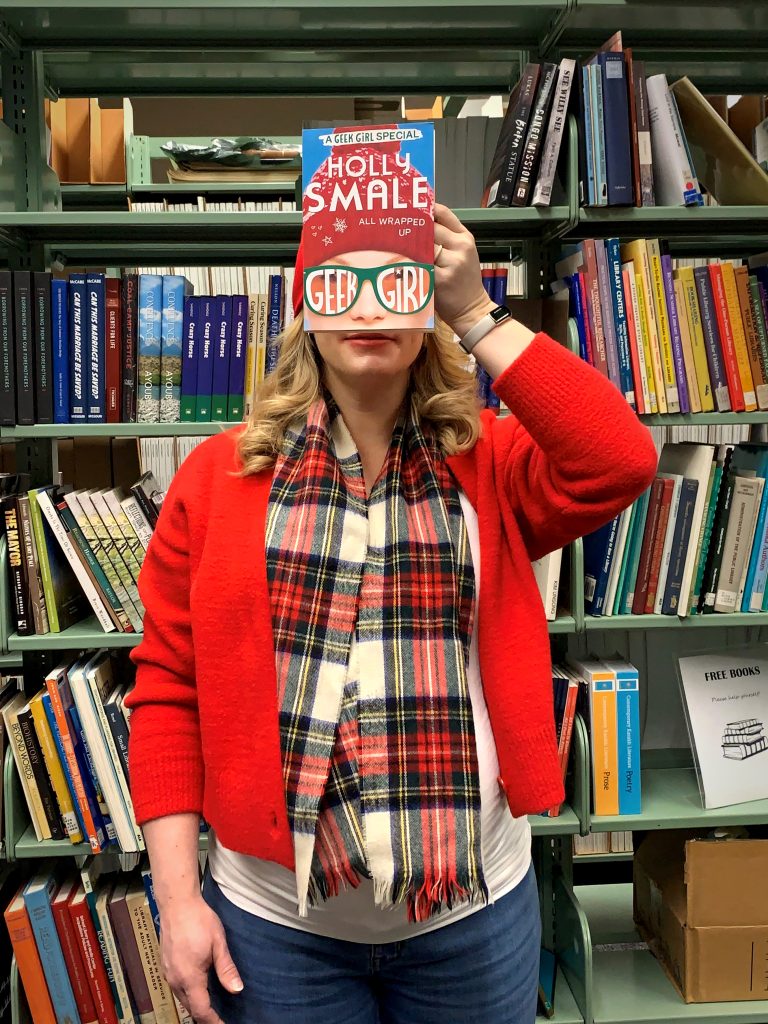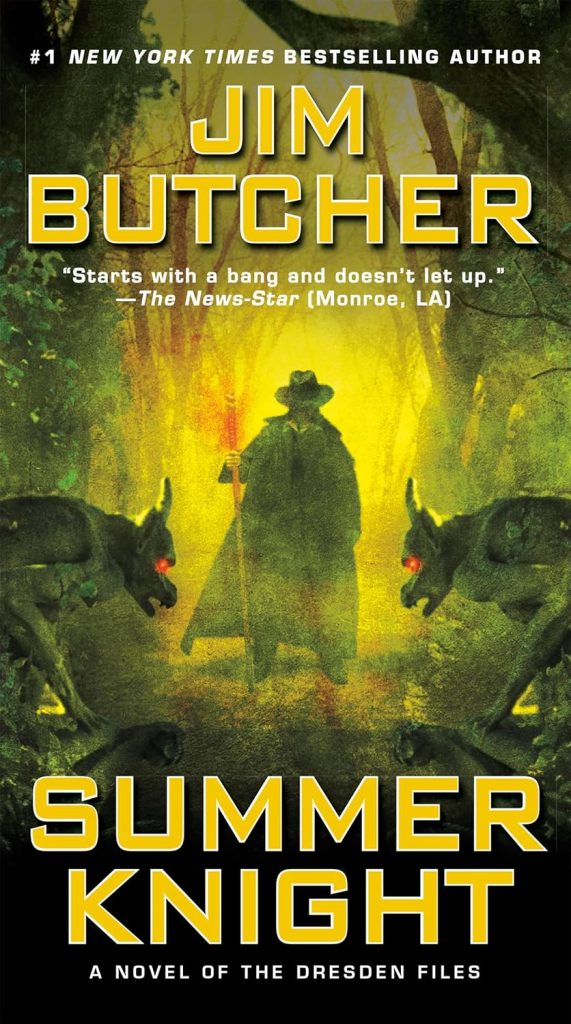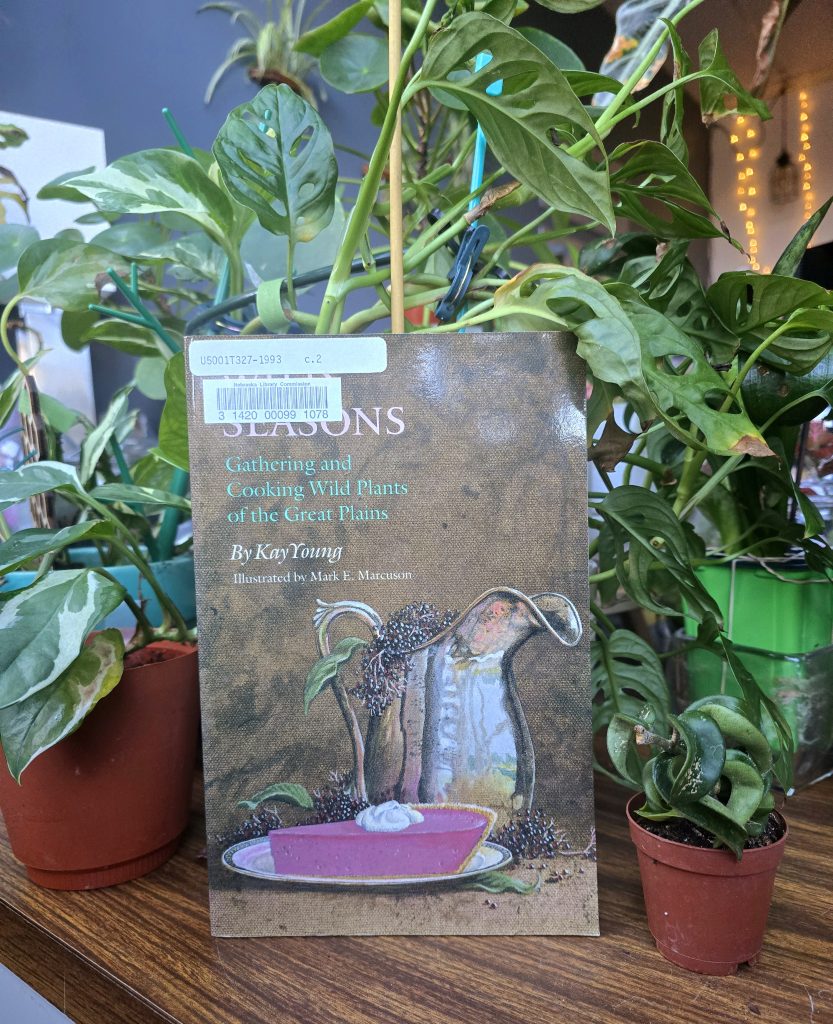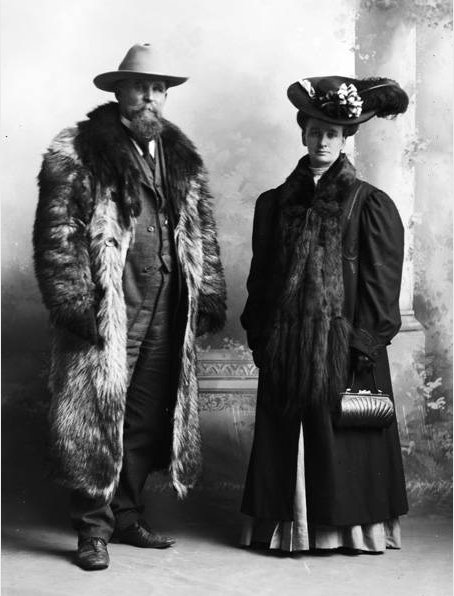Search the Blog
Categories
- Books & Reading
- Broadband Buzz
- Census
- Education & Training
- Friday Reads
- General
- Grants
- Information Resources
- Library Management
- Nebraska Center for the Book
- Nebraska Libraries on the Web
- Nebraska Memories
- Now hiring @ your library
- Preservation
- Pretty Sweet Tech
- Programming
- Public Library Boards of Trustees
- Public Relations
- Talking Book & Braille Service (TBBS)
- Technology
- Uncategorized
- What's Up Doc / Govdocs
- Youth Services
Archives
Subscribe
Category Archives: General
Nebraska Library Commission Announces Public Library Accreditation
FOR IMMEDIATE RELEASE:
January 13, 2025
FOR MORE INFORMATION:
Christa Porter
402-471-3107
800-307-2665
Nebraska Library Commission Announces Public Library Accreditation
Nebraska Library Commission Library Development Director Christa Porter recently announced the accreditation of thirty-eight public libraries across Nebraska.
Porter stated, “We are dedicated to helping Nebraska libraries meet Nebraskans’ information needs, opening up the world of information for citizens of all ages. The Library Commission continues to work in partnership with Nebraska libraries and the regional library systems, using the Public Library Accreditation program to help public libraries grow and develop.”
Public libraries in Nebraska are accredited for a five-year period. To learn more about this process and to see a complete list of all accredited Nebraska public libraries, go to http://nlc.nebraska.gov/LibAccred/Standings.asp.
The Nebraska Library Commission congratulates the public libraries listed below as they move forward toward the realization of this vision for the future: “All Nebraskans will have improved access to enhanced library and information services, provided and facilitated by qualified library personnel, boards, and supporters with the knowledge, skills, abilities and attitudes necessary to provide excellent library and information services.”
Nebraska Public Libraries Accredited through December 31, 2029:
- Ainsworth Public Library
- Alice M Farr Library, Aurora
- Arlington Public Library
- Bayard Public Library
- Bennington Public Library
- Bob and Wauneta Burkley Library, DeWitt
- Broadwater Public Library
- Clarkson Public Library
- Columbus Public Library
- Crawford Public Library
- Dvoracek Memorial Library, Wilber
- Elmwood Public Library
- Fairbury Public Library
- Gibbon Public Library
- Grand Island Public Library
- Hastings Public Library
- Hildreth Public Library
- Hooper Public Library
- John A Stahl Library, West Point
- Kimball Public Library
- Laurel Community Learning Center
- Lied Scottsbluff Public Library
- Lied Winside Public Library
- Lincoln City Libraries
- Loup City Public Library
- Madison Public Library
- Morton-James Public Library, Nebraska City
- Newman Grove Public Library
- Oshkosh Public Library
- Palisade Public Library
- Plainview Public Library
- Raymond A Whitwer Tilden Public Library
- Scotia Public Library & Heritage Center
- Sioux County Public Library, Harrison
- South Sioux City Public Library
- Syracuse Public Library
- Weeping Water Public Library
- Yutan Public Library
As the state library agency, the Nebraska Library Commission is an advocate for the library and information needs of all Nebraskans. The mission of the Library Commission is statewide promotion, development, and coordination of library and information services, “bringing together people and information.”
###
The most up-to-date news releases from the Nebraska Library Commission are always available on the Library Commission Website, http://nlc.nebraska.gov/publications/newsreleases.
Posted in General, Public Relations
Tagged Accreditation, Public Library Accreditation
Leave a comment
What’s Up Doc? New State Agency Publications at the Nebraska Library Commission
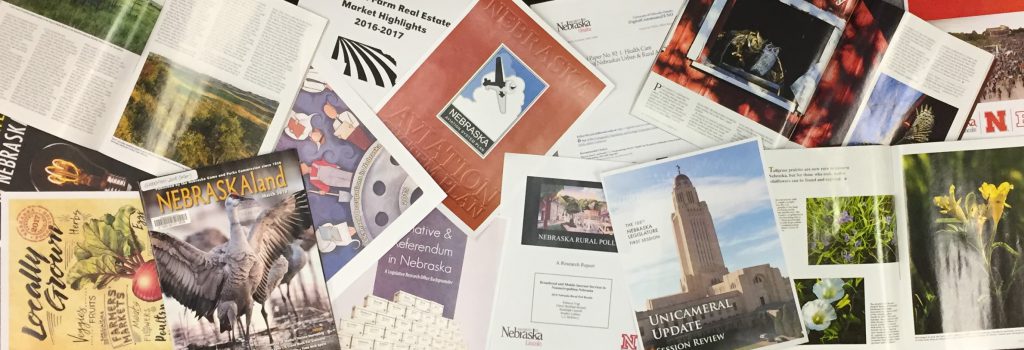
New state agency publications have been received at the Nebraska Library Commission for November and December, 2024. Included are reports from the Nebraska Board of Barber Examiners, the Nebraska Board of Engineers and Architects, the Nebraska Children’s Commission, Nebraska’s Coordinating Commission for Postsecondary Education, and the Nebraska Office of Violence Prevention, to name a few.
With the exception of the University of Nebraska Press titles, items are available for immediate viewing and printing by clicking directly in the .pdf below. The University of Nebraska Press titles can be checked out by librarians for their patrons here: Online Catalog.
The Nebraska Legislature created the Nebraska Publications Clearinghouse in 1972 as a service of the Nebraska Library Commission. Its purpose is to collect, preserve, and provide access to all public information published by Nebraska state agencies. By law (State Statutes 51-411 to 51-413) all Nebraska state agencies are required to submit their published documents to the Clearinghouse. For more information, visit the Nebraska Publications Clearinghouse page, contact Mary Sauers, Government Information Services Librarian; or contact Bonnie Henzel, State Documents Staff Assistant.
Posted in Books & Reading, Education & Training, General, Information Resources, What's Up Doc / Govdocs
Tagged books, GovDocs, Reading
Leave a comment
Throwback Thursday: Exterior View of Brick House
Are you staying warm this #ThrowbackThursday?

This 3-5/8″ x 4-3/4″ black and white acetate negative is dated around 1935-1945 and shows an exterior view of a one-story, cross-gabled brick house. The house has a garage underneath part of the first floor, and there are retaining walls on each side of the driveway leading up to the garage. A tree stands in front of the house, and there is snow on the ground. This house is located at 812 N. 38th Street in Omaha, Nebraska.
This image is published and owned by the The Durham Museum. The William Wentworth Collection at The Durham Museum consists of 4663 negatives of images that document life in Omaha, Nebraska from 1934 through 1950. William Wentworth worked as both a freelancer and a commercial photographer, providing a unique view of architecture, businesses, and community life in Omaha.
See this collection and many more on the Nebraska Memories archive!
The Nebraska Memories archive is brought to you by the Nebraska Library Commission. If your institution is interested in participating in Nebraska Memories, see http://nlc.nebraska.gov/nebraskamemories/participation.aspx for more information.
Friday Reads: A Court of Thorns and Roses, by Sarah J. Maas
Recently I was with one of my daughters, and asked her what she was currently reading. The conversation that followed was all about the book genre that both my daughters have fallen completely in love with: Fantasy Romance. In general this is not a genre I’ve been drawn to, but they are so enthusiastic about it I thought I would give one a try. A Court of Thorns and Roses was the one recommended I read first, so I jumped out of my comfort zone and read something different. I will admit that it was a fun read, with faeries, demons, magic, and adventure galore. I both read and listened to it, and enjoyed both. Sarah J. Maas is an excellent writer, and it was easy to imagine the settings, characters, and story.
“When nineteen-year-old huntress Feyre kills a wolf in the woods, a terrifying creature arrives at her house to demand retribution. She is dragged away from her family to a treacherous magical land she knows about only from legends. There, Feyre discovers that her captor is not truly a beast, but one of the lethal, immortal faeries who once ruled her world. At least, he’s not a beast all the time. As she adapts to her new home, her feelings for the faerie, Tamlin, transform from icy hostility into a fiery passion that burns through every lie she’s been told about the beautiful, dangerous world of the Fae. But something is not right in the faerie lands. An ancient, wicked shadow is growing, and Feyre must find a way to stop it or doom Tamlin—and his world—forever. “
A Court of Thorns and Roses is the first in a series of five books. Ms. Maas has written four series in the Fantasy Romance genre, and there are other authors to choose from as well: Rebecca Yarros, Raven Kennedy, and Callie Hart just to name a few. There are also titles in this genre available to our Talking Book and Braille patrons–just search in BARD, or call your reader advisor. Enjoy! **Synopsis courtesy of Amazon and Audible.
Throwback Thursday: Party at Elks Club
Happy New Year #ThrowbackThursday!
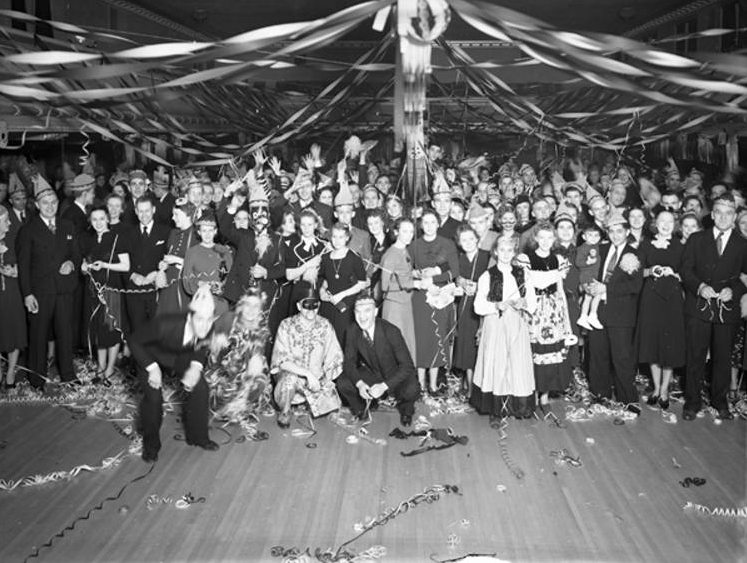
Dated November 1, 1937, men and women are gathered in a large group inside an Elks Club building in this 8″ x 10″ black and white acetate negative. There are streamers strung from the ceiling and some on the wooden floor. Some of the partygoers are wearing masks, while others have party hats. This image was taken for Safeway Stores.
This image is published and owned by the The Durham Museum. The William Wentworth Collection at The Durham Museum consists of 4663 negatives of images that document life in Omaha, Nebraska from 1934 through 1950. William Wentworth worked as both a freelancer and a commercial photographer, providing a unique view of architecture, businesses, and community life in Omaha.
See this collection and many more on the Nebraska Memories archive!
The Nebraska Memories archive is brought to you by the Nebraska Library Commission. If your institution is interested in participating in Nebraska Memories, see http://nlc.nebraska.gov/nebraskamemories/participation.aspx for more information.
Book Briefs: New University of Nebraska Press Books at the Nebraska Publications Clearinghouse
The Nebraska Publications Clearinghouse receives documents every month from all Nebraska state agencies, including the University of Nebraska Press (UNP). UNP books, as well as all Nebraska state documents, are available for checkout by libraries and librarians for their patrons.
Here are the UNP books the Clearinghouse received in November and December, 2024:
Colonialism and Literature : An Affective Narratology, by Patrick Colm Hogan. Series: Frontiers of Narrative
In earlier work Patrick Colm Hogan argued that a few story genres—heroic, romantic, sacrificial, and others—recur prominently across separate literary traditions. These structures recur because they derive from important emotion-motivation systems governing human social interaction, such as group pride and shame.
In Colonialism and Literature Hogan extends this work to argue that these genres play a prominent role in the fashioning of postcolonization literature—literature encompassing both the colonial and postcolonial periods. Crucially, colonizers and colonized people commonly understand and explain their situation in terms of these narrative structures. In other words, the stories we tell to some degree simply reflect the facts. But we also tend to interpret our condition in terms of genre, with the genre guiding us about what to record and how to evaluate it. Hogan explores these consequential processes in theoretical and literary analysis, presenting extended, culturally and historically specified interpretations of works by Pádraic Pearse (Ireland), Ngũgĩ wa Thiong’o (Kenya), Yasujiro Ozu (Japan), J. M. Coetzee (South Africa), Margaret Atwood (Canada), Rabindranath Tagore (India), Abderrahmane Sissako (Mali), and Dinabandhu Mitra (India).
Contemporary Humanistic Judaism : Beliefs, Values, Practices, edited by Adam Chalom and Jodi Kornfeld. Series: JPS Anthologies of Jewish Thought
Opening up multidimensional ideas, values, and practices of Humanistic Judaism to Jews of all backgrounds and beliefs, Contemporary Humanistic Judaism collects the movement’s most important texts for the first time and answers the oft-raised question, “How can you be Jewish and celebrate Judaism if you don’t believe in God?” with new vision.
Part 1 (“Beliefs and Ethics”) examines core positive beliefs—in human agency, social progress, ethics without supernatural authority, sources of natural transcendence, and Humanistic Jews’ own authority to remake their traditional Jewish inheritance on their own terms “beyond God.” Part 2 (“Identity”) discusses how Humanistic Judaism empowers individuals to self-define as Jews, respects people’s decisions to marry whom they love, and navigates the Israel-Diaspora relationship. Part 3 (“Culture”) describes how the many worlds of Jewish cultural experience—art, music, food, language, heirlooms—ground Jewishness and enable endless exploration. Part 4 (“Jewish Life”) applies humanist philosophy to lived Jewish experience: reimagined creative education (where students choose passages meaningful to them for their bar, bat, or b mitzvah [gender-neutral] celebrations), liturgy, life cycle, and holiday celebrations (where Hanukkah emphasizes the religious freedom to believe as one chooses).
Jewish seekers, educators, and scholars alike will come to appreciate the unique ideologies and lived expressions of Humanistic Judaism.
Great Plains Ethnohistory : New Interdisciplinary Approaches, edited by Rani-Henrik Andersson, Thierry Veyrié, and Logan Sutton. Series: Studies in the Anthropology of North American Indians
Great Plains Ethnohistory offers a collection of state-of-the-field work in Great Plains ethnohistory, both contemporary and historical, covering the traditional anthropological subfields of ethnography, cultural history, archaeology, and linguistics. As ethnohistory matured into an interdisciplinary endeavor in the 1950s with the formation of the American Society for Ethnohistory, historians and anthropologists developed scholarly methodology for the study of Native American societies from their own points of view. Within this developing framework, Native cultures of the Great Plains represented a foundational research area.
Great Plains Ethnohistory pays intellectual debts to Raymond J. DeMallie and Douglas R. Parks, whose research from the 1970s onward brought ethnohistorical approaches to the study of Native cultures, histories, and languages into the international community of the humanities and social sciences, sciences, and arts. The work of the scholars assembled in this volume advocates for an ethnohistory that continues to decompartmentalize Indigenous knowledge and scholarly methodologies, including some of the constructs, biases, and prejudices perpetuated within traditional scholarly disciplines.
Including essays by Gilles Havard, Joanna Scherer, Sebastian Braun, Brad KuuNUx TeeRIt Kroupa, and DeMallie and Parks themselves, among others, plus an afterword by Philip J. Deloria, this is an essential contribution to the scholarly field and a volume for undergraduate and graduate students and scholars who study Native American and Indigenous cultures.
Hell-Bent for Leather : Sex and Sexuality in the Weird Western, edited by Kerry Fine, Michael K. Johnson, Rebecca M. Lush and Sara L. Spurgeon. Series: Postwestern Horizons
Hell-Bent for Leather: Sex and Sexuality in the Weird Western builds on the Locus Award finalist Weird Westerns: Race, Gender, Genre. This new collection takes a deep dive into the myriad ways sex and sexuality are imagined in weird western literature, film, television, and video games, paying special attention to portrayals of power and privilege. The contributors explore weird western challenges to assumptions about varied genders and sexualities, drawing our attention to how the western can reinforce existing gender and sexual paradigms or overturn them in delightful, terrifying, or unexpected ways.
Primary texts range from CBS’s campy BDSM-inflected steampunk western The Wild Wild West to the Star Wars franchise’s popular leather-daddy bounty hunter The Mandalorian, from Ishmael Reed’s satirical postmodern western Yellow Back Radio Broke-Down to C Pam Zhang’s acclaimed novel How Much of These Hills Is Gold. Chapters engage texts from Australia and Great Britain, classic horror like The Texas Chain Saw Massacre, the popular video games BioShock Infinite and The Last of Us II, and less well-known texts like Laguna Pueblo–Navajo author A. A. Carr’s erotic vampire/monster slayer western Eye Killers.
Public Land and Democracy in America : Understanding Conflict Over Grand Staircase-Escalante National Monument, by Julie Brugger. Series: Anthropology of Contemporary North America
In recent years the Grand Staircase-Escalante National Monument in southern Utah has figured prominently in the long and ongoing struggle over the meaning and value of America’s public lands. In 1996 President Bill Clinton used the Antiquities Act to create the monument, with the goal of protecting scientific and historical resources. His action incensed Utah elected officials and local residents who were neither informed nor consulted beforehand, and opposition to the monument has continued to make its day-to-day management problematic. In 2017 President Donald Trump reduced the monument’s size, an action immediately challenged by multiple lawsuits; subsequently, President Joe Biden restored the monument in 2021.
In Public Land and Democracy in America Julie Brugger brings into focus the perspectives of a variety of groups affected by conflict over the monument, including residents of adjacent communities, ranchers, federal land management agency employees, and environmentalists. In the process of following management disputes at the monument over the years, Brugger considers how conceptions of democracy have shaped and been shaped by the regional landscape and by these disputes.
Through this ethnographic evidence, Brugger proposes a concept of democracy that encompasses disparate meanings and experiences, embraces conflict, and suggests a crucial role for public lands in transforming antagonism into agonism.
Taking Charge, Making Change : Native People and the Transition of Education from Stephan Mission to Crow Creek Tribal School, by Robert W. Galler, Jr. Series: Indigenous Education
Taking Charge, Making Change gives voice to generations of Native people—from Crow Creek, Lower Brule, and other reservations in North Dakota and South Dakota—who shaped a school originally designed to foster Catholicism and assimilation. Local initiatives and collaboration transformed the Catholic Stephan Mission boarding school into the Crow Creek Tribal School, which now features both tribal traditions and American educational programs.
Through archival research and interviews with parents, graduates, teachers, and staff at Crow Creek and the surrounding community, Robert W. Galler Jr. places Native students at the heart of the narrative, demonstrating multifaceted family connections at a nineteenth-century, on-reservation religious school that evolved into a tribally run institution in the 1970s. He shows numerous ways that community members worked with Catholic leaders and ultimately transformed their mindsets and educational approaches over nearly a century. While recognizing the many challenges and tragedies that Native students endured, Galler highlights the creativity, collaborations, and contributions of the students and graduates to their communities.
Taking Charge, Making Change shows how individuals and families helped to found the school, maintain enrollment, secure funding, and influence school policies. Its graduates went on to serve with distinction in the U.S. military, earn advanced degrees after college, join and lead tribal councils in North and South Dakota, help their communities push back against federal policies, and continue to run their own education system.
The Windflower Home Almanac of Poetry, edited by Ted Kooser.
The Windflower Home Almanac of Poetry is an anthology of poems originally selected by Ted Kooser in 1980 and published by his Windflower Press, a small, independent publisher that specialized in poetry from the Great Plains. The collection contains almost two hundred poems from dozens of poets and was designed to resemble a commonplace farmer’s almanac.
The Windflower Press was the sole operation of Kooser, who was later named the first U.S. poet laureate from the Great Plains. His press gained national recognition for highlighting the work of the region’s young poets, and its Windflower Home Almanac of Poetry earned notice from the Library Journal as one of its era’s best small press books.
**Pictures and Synopses courtesy of University of Nebraska Press.
#BookFaceFriday “First Dog’s White House Christmas” by J. Patrick Lewis and Beth Zappitello
You can keep the Christmas lights up till January with this #BookFaceFriday!
Merry Christmas and Happy Holidays from the Nebraska Library Commission! As you’re setting up all those new tablets, Ereaders, and phones that were unwrapped on Christmas morning, don’t forget to download the Libby App and link your Library Card. You’re whole family can have access to free books through your library, and that includes picture books for your youngest kids like this week’s #BookFace “First Dog’s White House Christmas” written by J. Patrick Lewis and Beth Zappitello, and illustrated by Tim Bowers (Sleeping Bear Press, 2010). It’s available as a an eBook through Nebraska OverDrive Libraries: Kids & Teens, and can be found in the specially curated collection “Get Wrapped Up in a Good Book??: Juvenile Holiday Reads,” which is filled with holiday themed titles for kids and teens.
“In this wonderful picture book, the authors give readers a delightfully dog-centric picture of a Christmas gala at the White House. Readers will learn about Christmas traditions from many lands around the world, and they will also come to appreciate that though traditions might be different, the meaning of Christmas is the same the world over, if you are human or canine.”
— Marya Jansen-Gruber, Through the Looking Glass
Libraries participating in the Nebraska OverDrive Libraries Group currently have access to a shared and growing collection of digital downloadable audiobooks and eBooks. 194 libraries across the state share the Nebraska OverDrive collection of 26,898 audiobooks, 36,794 ebooks, and 5,133 magazines. As an added bonus it includes 130 podcasts that are always available with simultaneous use (SU), as well as SU ebooks and audiobook titles that publishers have made available for a limited time. If you’re a part of it, let your users know about this great title, and if you’re not a member yet, find more information about participating in Nebraska Overdrive Libraries!
Love this #BookFace & reading? Check out our past #BookFaceFriday photos on the Nebraska Library Commission’s Facebook page!
Throwback Thursday: Robert S. Somers Residence Christmas Tree
Happy Holidays #ThrowbackThursday!

The center of this image at the residence of Mr. and Mrs. Robert S. Somers, 1015 North Somers Avenue, is the Christmas tree and the two small boys posed beneath its branches. The tree lights are wax candles in tin holders with ball weights for counter balance. Ornaments of German blown glass and paper or pasteboard are scattered throughout the branches. Discernable shapes include a fish, a crescent moon and a mandolin. The small child at the right of the image is Lester A. Somers and his movement has slightly blurred a wheeled toy. The child on the right is unidentified. A marble fireplace front and the cast iron grate are partially visible. This photograph is dated around 1901-1902.
This image is owned by the Dodge County Historical Society, and published by Keene Memorial Library. Both are located in Fremont, Nebraska, and they worked as partners to digitize and describe content owned by the historical society. The collection of photographs documents life in Fremont in the late 1800s and early 1900s.
See this collection and many more on the Nebraska Memories archive!
The Nebraska Memories archive is brought to you by the Nebraska Library Commission. If your institution is interested in participating in Nebraska Memories, see http://nlc.nebraska.gov/nebraskamemories/participation.aspx for more information.
#BookFaceFriday “All Wrapped Up” by Holly Smale
Don’t get your tinsel in a tangle it’s #BookFaceFriday!
Winter break is almost upon us and it’s the perfect time to get your kids set up to check out ebooks and audiobooks while they’re at home for holiday break. Even if winter weather ruins your regular trip to the library you and your kids can still enjoy new books like “All Wrapped Up: A Geek Girl Special” by Holly Smale (HarperCollinsChildren’sBooks, 2022). It’s available as an eBook through Nebraska OverDrive Libraries: Kids & Teens, and can be found in the specially curated collection “Get Wrapped Up in a Good Book??: Juvenile Holiday Reads,” which is filled with Holiday themed titles for kids and teens.
“A feel-good satisfying gem that will have teens smiling from cover to cover, and walking a little taller after reading”
— Books for Keeps
Libraries participating in the Nebraska OverDrive Libraries Group currently have access to a shared and growing collection of digital downloadable audiobooks and eBooks. 194 libraries across the state share the Nebraska OverDrive collection of 26,898 audiobooks, 36,794 ebooks, and 5,133 magazines. As an added bonus it includes 130 podcasts that are always available with simultaneous use (SU), as well as SU ebooks and audiobook titles that publishers have made available for a limited time. If you’re a part of it, let your users know about this great title, and if you’re not a member yet, find more information about participating in Nebraska Overdrive Libraries!
Love this #BookFace & reading? Check out our past #BookFaceFriday photos on the Nebraska Library Commission’s Facebook page!
Throwback Thursday: Woman Shopping
Have you finished your holiday shopping #ThrowbackThursday?

The interior of a department store filled with a crowd of women can be seen in this 3-5/8″ x 4-3/4″ black and white acetate negative. Dated 9/29/1938, a display counter with merchandise can be seen on the floor, along with a filing cabinet with floral arrangements on top of it.
This image is published and owned by the The Durham Museum. The William Wentworth Collection at The Durham Museum consists of 4663 negatives of images that document life in Omaha, Nebraska from 1934 through 1950. William Wentworth worked as both a freelancer and a commercial photographer, providing a unique view of architecture, businesses, and community life in Omaha.
See this collection and many more on the Nebraska Memories archive!
The Nebraska Memories archive is brought to you by the Nebraska Library Commission. If your institution is interested in participating in Nebraska Memories, see http://nlc.nebraska.gov/nebraskamemories/participation.aspx for more information.
Posted in General, Nebraska Memories, Preservation
Tagged acetate negative, Omaha Nebraska, The Durham Museum, Throwback Thursday
Leave a comment
E-rate Form 471 FY2025 Application Filing Window Dates Announced

of the E-rate pie!
To prepare for the window opening:
- If you haven’t already done so, and you are not exempt, file your FCC Form 470 now! You do not have to wait for the Form 471 window to open.
- To file your FCC Form 470, log into the E-Rate Productivity Center (EPC). You must wait 28 days after your FCC Form 470 is posted to the USAC website before you can close your competitive bidding process, select a service provider, sign a contract (if applicable), and submit an FCC Form 471. If you issue an RFP after the FCC Form 470 is posted, you must wait 28 days from the release of the RFP to select a service provider.
- Wednesday, February 26, 2025 is the deadline to post your FCC Form 470 to the USAC website or issue an RFP and still complete all of these actions before the window closes.
- To file your FCC Form 470, log into the E-Rate Productivity Center (EPC). You must wait 28 days after your FCC Form 470 is posted to the USAC website before you can close your competitive bidding process, select a service provider, sign a contract (if applicable), and submit an FCC Form 471. If you issue an RFP after the FCC Form 470 is posted, you must wait 28 days from the release of the RFP to select a service provider.
- Update Your EPC Profile During the Administrative Window – Update your EPC profile by January 9, 2025, at 11:59 p.m. EST. Review your EPC profile and confirm all of your information is accurate including your organization’s name, address, and other details. Your profile is currently unlocked and available for you to insert any further updates, but will be locked again before the 471 Filing Window opens. Libraries should confirm their square footage, main branch, and public school district of the main branch information is correct and that any bookmobiles or kiosks are included. View the EPC Administrative Window webpage to learn more.
You can find additional resources and instructions for using the EPC on the USAC website and on the NLC’s E-rate website.
Please contact Christa Porter, Nebraska State E-rate Coordinator for Public Libraries, if you have any questions or need any assistance submitting your E-rate forms.
Posted in Broadband Buzz, General, Library Management, Technology
Tagged e-rate, erate
Leave a comment
#BookFaceFriday “Unlucky 13” by James Patterson & Maxine Paetro
This #BookFaceFriday can see the writings on the wall!
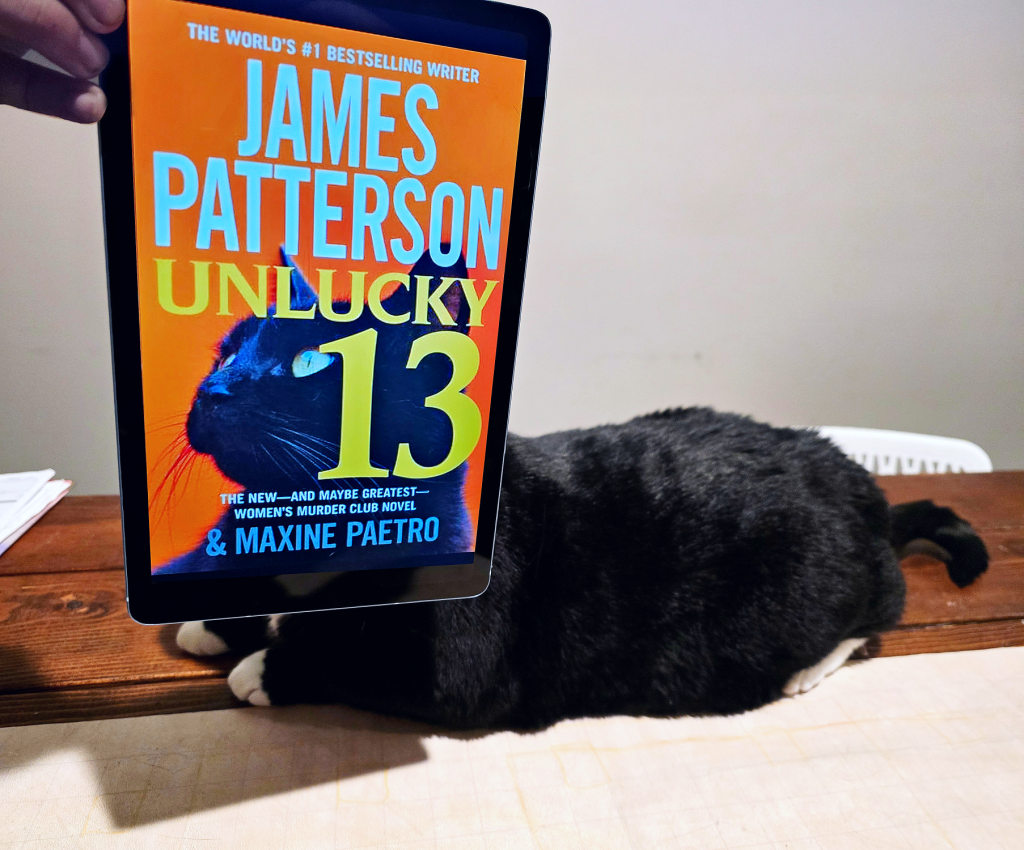
This week’s #BookFaceFriday isn’t superstitious at all! Happy Friday the Thirteenth, if you’re avoiding black cats, walking under ladders, or opening umbrellas indoors, this BookFace is not for you! Check out “Unlucky 13” by James Patterson and Maxine Paetro (Grand Central Publishing, 2015) it’s the thirteenth installment in Patterson’s “Women’s Murder Club” series. San Francisco Detective Lindsay Boxer is hoping the luck is on her side in this murder mystery thriller. We think your luck is changing because it’s available as a an eBook and Audiobook through Nebraska OverDrive Libraries, and can be found alongside the entire twenty four book “Women’s Murder Club” series all on OverDrive.
“Those who haven’t read any of the novels in the Women’s Murder Club series are cheating themselves.”
— BookReporter.com
Libraries participating in the Nebraska OverDrive Libraries Group currently have access to a shared and growing collection of digital downloadable audiobooks and eBooks. 194 libraries across the state share the Nebraska OverDrive collection of 26,898 audiobooks, 36,794 ebooks, and 5,133 magazines. As an added bonus it includes 130 podcasts that are always available with simultaneous use (SU), as well as SU ebooks and audiobook titles that publishers have made available for a limited time. If you’re a part of it, let your users know about this great title, and if you’re not a member yet, find more information about participating in Nebraska Overdrive Libraries!
Love this #BookFace & reading? We suggest checking out all the titles available for book clubs at http://nlc.nebraska.gov/ref/bookclub. Check out our past #BookFaceFriday photos on the Nebraska Library Commission’s Facebook page!
Friday Reads: “Summer Knight” by Jim Butcher
No series has so quickly enraptured me like Jim Butcher’s The Dresden Files, with each book pulling me deeper in than the last. Set in Chicago, the series follows Harry Dresden: wizard for hire, paranormal investigator, and perpetually down on his luck. He’s got a sharp wit, one-liners that leave you laughing out loud, and a hero complex that puts him in dangerous situations for the sake of others that you can’t help but feel for.
Believing in magic has always come naturally for me, I was raised on Disney after all, but the world of The Dresden Files really blends the idea of the supernatural into the real-world setting of Chicago so seamlessly that it leaves you looking for bits of magic around you- though perhaps in more dangerous fashion than Disney magic might have you believe. Ghosts, vampires, werewolves, and of course wizards have all played major roles in the series up to this point- but my favorite has always been the fae.
While the fae had been introduced in previous books, Summer Knight really delves into the world of Faerie and even further expands the magical world that Butcher has been building up for the past three books, so I couldn’t have been more delighted when very early on Harry gets a visit from one of the Faerie Queens, Queen Mab of the Winter Court. His fairy godmother (long story) has sold his debt to her, and she’s here to cash in.
While I won’t delve too deep into the plot points of Summer Knight, it generally covers a brewing war between the Summer and Winter Courts of Faerie, due to the murder of the Summer Knight- and the Summer Queen Titania thinks Winter is to blame. Queen Mab tasks Harry to discover the murderer in order to prevent the coming war between the courts. The book moves at a thrilling pace, involving old characters that you’ve already grown to love as well as introducing some new key characters as well throughout the story. And of course, Harry has the world against him once again as he fights to complete his task on time.
If you’re looking to dip your feet into the world of The Dresden Files, I highly recommend the audio books. I’ve always struggled with audiobooks, either losing focus or not processing parts of the book due to the strange way my brain works, but The Dresden Files has been the exception. The audio books are all done by James Marsters of Buffy the Vampire Slayer fame, and his performance as Harry is incredible. The audiobooks really make you feel as if Harry is sitting across a table, telling the story to you himself. It’s an extra layer of immersion into Butcher’s magical world, as well as a way to give Harry the ever so sarcastic tone of voice he deserves.
I’m more than excited to move onto the next book in the series, and have already pre-downloaded the next couple audiobooks onto my phone to listen to while traveling over the holidays. With seventeen books currently out and more to come, I know I’m in for a thrilling treat.
Butcher, Jim. Summer Knight. Penguin Putnam. 2002
Posted in Books & Reading, Friday Reads, General
Tagged audiobooks, Book Review, Friday Reads, Jim Butcher, Summer Knight, The Dresden Files
Leave a comment
Throwback Thursday: Bird in a Cage
Happy #ThrowbackThursday!

A bird in a cage is sitting on top of a display of Geisler’s bird seed in this 3″ x 5″ black and white acetate negative. A sign on the birdcage reads: “Geisler’s Authoritative Bird Foods”. This image was taken for Geisler Max Bird Company, located at 113 N. 16th Street in Omaha, Nebraska.
This image is published and owned by the The Durham Museum. The William Wentworth Collection at The Durham Museum consists of 4663 negatives of images that document life in Omaha, Nebraska from 1934 through 1950. William Wentworth worked as both a freelancer and a commercial photographer, providing a unique view of architecture, businesses, and community life in Omaha.
See this collection and many more on the Nebraska Memories archive!
The Nebraska Memories archive is brought to you by the Nebraska Library Commission. If your institution is interested in participating in Nebraska Memories, see http://nlc.nebraska.gov/nebraskamemories/participation.aspx for more information.
#BookFaceFriday “Stormbreaker” by Anthony Horowitz
Saving the world one #BookFace at a time!
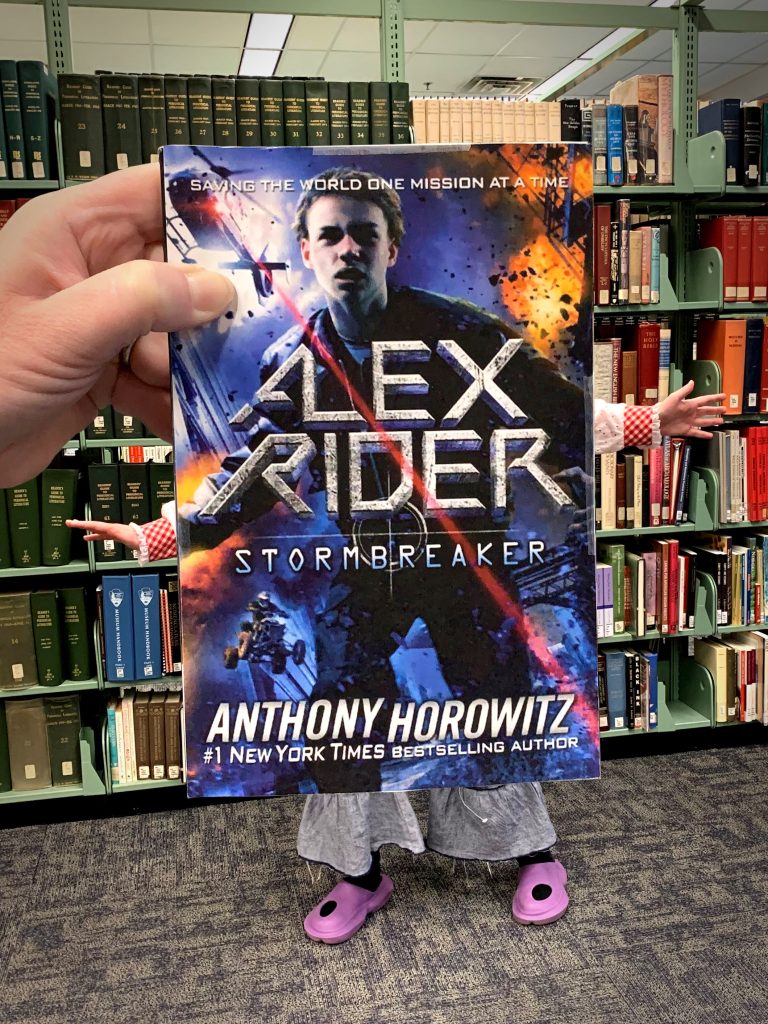
“Readers will cheer for Alex Rider, the 14-year-old hero of British author Horowitz’s spy thriller (the first in a projected series). When his guardian and uncle, Ian, is mysteriously killed, Alex discovers that his uncle was not the bank vice-president he purported to be, but rather a spy for the British government.”
— Publishers Weekly
Book Club Kits Rules for Use
- These kits can be checked out by the librarians of Nebraska libraries and media centers.
- Circulation times are flexible and will be based upon availability. There is no standard check-out time for book club kits.
- Please search the collection to select items you wish to borrow and use the REQUEST THIS KIT icon to borrow items.
- Contact the Information Desk at the Library Commission if you have any questions: by phone: 800/307-2665, or by email: Information Services Team
Love this #BookFace & reading? Check out our past #BookFaceFriday photos on the Nebraska Library Commission’s Facebook page!
Posted in Books & Reading, General
Tagged Alex Rider Series, Anthony Horowitz, Audiobook, Book Club Kits, bookfacefriday, Ebook, Novel, Reading, Stormbreaker, YA books
Leave a comment
Throwback Thursday: Mr. and Mrs. Oren Thayer
Put on your winter coats this #ThrowbackThursday!
This 4″x6″ glass plate negative is full figure portrait photograph of Oren and Tinnie Thayer, from David City, Nebraska. Oren is wearing a three-piece suit with white shirt and knotted tie, a long-haired full-length fur coat with wide collar and a wide-brimmed, felt hat. Tinnie is dressed in a floor-length skirt and white stand-collar blouse, ankle-length, dark wool overcoat with bodice embroidery and wide cuffs on the gathered sleeves with a dark fur collar and fur scarf, wide-brimmed hat with ostrich feather and ribbon trim and black leather gloves, holding a box-style purse.
Oren Mortimer Thayer was born December 4, 1855, in Winnebago, Illinois, to Elbridge & Mary Thayer. He married Mary “Polly” Farrell about 1876. They were divorced about 1905. Oren married Tinnie Belle Van Matre, December 12, 1906, in Schuyler, Nebraska. The photograph is probably their wedding picture. Tinnie was born January 21, 1873 in Illinois. Oren died October 29, 1932, in Dawson County, Nebraska, and Tinnie died January 21, 1934, in Kearney, Nebraska. They are both buried in the David City Cemetery.
This image is published as part of the Boston Studio Project collection, and is owned by both them and the Thorpe Opera House Foundation. The Boston Studio Collection consists of over 68,000 negatives that record life in and around David City, Nebraska from 1893 to 1979.
See this collection and many more on the Nebraska Memories archive!
The Nebraska Memories archive is brought to you by the Nebraska Library Commission. If your institution is interested in participating in Nebraska Memories, see http://nlc.nebraska.gov/nebraskamemories/participation.aspx for more information.
NCompass Live: To Librarianship and Beyond: What’s It Like Being a Corporate Librarian?
What’s It Like Being a Corporate Librarian? Find out on next week’s NCompass Live webinar, ‘To Librarianship and Beyond’, on Wednesday, December 4 at 10am CT.
Have you ever wondered what it’s like to be a librarian in a corporate environment? Attend this session to hear Emily Nimsakont discuss her position as digital librarian for a software company. She will compare and contrast her job to more traditional library positions, discuss the pros and cons of working in the corporate world, and offer advice on breaking into this area of library work.
Presenter: Emily Nimsakont, Digital Librarian, Posit PBC.
Upcoming NCompass Live shows:
- Dec. 11 – Best New Children’s Books of 2024
- Dec. 18 – Fostering Healthy Communication in Your Library
- Dec. 25 – NO NCOMPASS LIVE THIS WEEK – HAPPY HOLIDAYS!
- Jan. 1, 2025 – NO NCOMPASS LIVE THIS WEEK
- Jan. 8, 2025 – Best New Teen Reads of 2024
- Jan. 29, 2025 – Pretty Sweet Tech
To register for an NCompass Live show, or to listen to recordings of past shows, go to the NCompass Live webpage.
NCompass Live is broadcast live every Wednesday from 10am – 11am Central Time. Convert to your time zone on the Official U.S. Time website.
The show is presented online using the GoTo Webinar online meeting service. Before you attend a session, please see the NLC Online Sessions webpage for detailed information about GoTo Webinar, including system requirements, firewall permissions, and equipment requirements for computer speakers and microphones.

